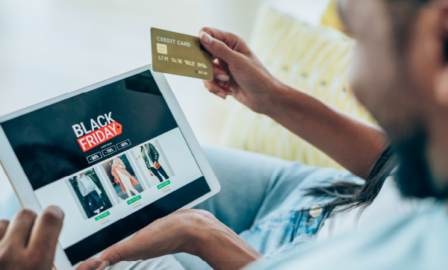3 Tips to Improve a Customer’s eCommerce Experience
As the retail industry continues to shift, one of the biggest challenges in the eCommerce customer experience is converting website visitors to loyal, returning customers. When it comes to having a strong user experience throughout your eCommerce process, consider how you can meet customers’ needs and ensure they can find what they’re looking for at any point of interacting with your brand.
3 Tips to Improve eCommerce Customer Experience
Below, we outline three tips to improve a customer’s eCommerce experience.
1. Create Seamless Experiences Across Channels
With 73% of retail shoppers using multiple channels to shop, it’s more imperative than ever to make sure they’re getting a consistent experience as they move from your mobile site to your desktop site. When a shopper moves across channels at different points in their buyer journey, are they getting the same look-and-feel and ease-of-use?
It’s critical for businesses to prioritize building superior mobile experiences, as 40% of shoppers report they’ll move to a competitor after having a less-than-positive mobile experience. Omnichannel user experiences are a big selling point for shoppers when it comes to the modern shopping landscape.
A strong eCommerce experience can also give businesses a competitive edge in their brick-and-mortar stores, with 59% of shoppers using their mobile devices in-store to compare costs or research deals and coupons. When customers are able to bounce back and forth between mobile, desktop, and in store with ease, they’re creating more points of contact with your brand, and thus more likely to return. Businesses should consider the high ROI potential when investing in creating a seamless digital and in-store experience.
2. Tailor the Shopper’s Experience through Personalization
With so many shoppers following through with their purchase decisions on mobile devices, many retailers worry that they won’t receive the same experience as they would in-store when interacting with a store associate. A potential solution? Personalization. Personalization allows brands to use customer data to show dynamic content unique to that individual. In fact, 86% of shoppers admit that personalization plays a key role in influencing their purchase decision.
Amazon’s “Frequently Bought Together” feature is a great example of implementing personalization before you’ve even gathered much data on your shopper. The “Frequently Bought Together” feature is a type of complementary product recommendation where Amazon displays other products that shoppers often purchased alongside the item a user is looking at. This helps imitate an end cap display in a store that might have items like sunscreen, bug spray, and beach chairs in the summer. With 35% of the site’s sales now being generated from its advanced algorithm, it’s clear that it’s a good investment to both improve your bottom line and shoppers’ eCommerce experience.
Artificial Intelligence (AI) tools, like those that can suggest complementary product recommendations, are now becoming a standard component of strong eCommerce products, meaning it’s easier than ever for brands to get to know their shopper better. As such, companies should consider implementing features like targeted discounts prompted by their past purchases, “for you” sections, and more.
3. Prioritize Building a Strong Loyalty Program
Loyalty is no longer based on the price or the product itself, but rather on the service and experience a company provides, and a top-notch loyalty program can keep shoppers coming back for more. 84% of consumers say they’re more likely to return to a brand because of a strong loyalty program, so how can businesses make sure their loyalty program is meeting consumer demand?
The most common type of loyalty program for brands just starting out is a points-based approach. Leading loyalty programs like DSW’s VIP program take this approach, which has been known to bring customers back because of its simplicity. A strong loyalty program will bring shoppers back to your eCommerce site time and time again and entice them to be a promoter of your brand.
The highest-ranked loyalty programs in the industry usually have a few things – low barriers to entry in terms of sign-ups, a good balance of a great experience and extra perks, and consistent communication that keeps customers informed without annoying or overwhelming them.
What’s Next?
For brands looking to get ahead in building superior eCommerce experiences, it’s important to always keep the customer at the forefront. If you’re looking to better define your eCommerce strategy, and elevate your shopper experience, let’s chat.
Subscribe to Clarkston's Insights



